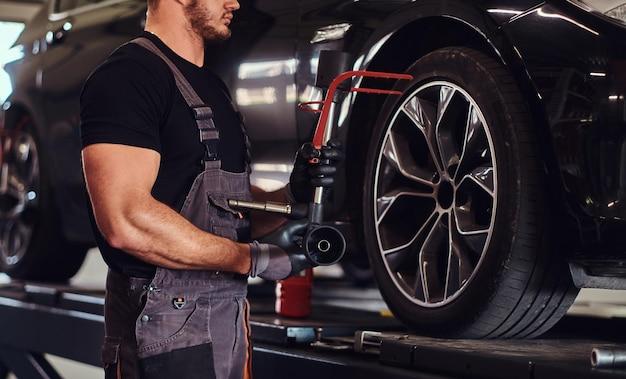When it comes to car maintenance, oil changes and brake checks are often top of mind. But one service many drivers overlook is wheel alignment. Despite being one of the most important factors affecting your vehicle’s performance, alignment issues often go unnoticed until they start causing real problems. In this post, we’ll explain what wheel alignment is, how to tell if yours is off, and why regular alignment checks should be part of every driver’s maintenance plan.
What Is Wheel Alignment?
Wheel alignment refers to the adjustment of a vehicle’s suspension — the system that connects your car to its wheels. It’s not about the tyres or wheels themselves, but how they interact with the vehicle’s steering and suspension components.
Proper alignment ensures:
- Wheels point in the right direction
- Tyres sit evenly on the road
- Steering and handling are smooth and predictable
Signs You Might Need a Wheel Alignment
If your car isn’t handling the way it used to, you might have an alignment issue. Here are common symptoms:
- Vehicle Pulls to One Side
If your car consistently drifts left or right, even when the steering wheel is centred, misalignment could be the cause. - Uneven or Rapid Tyre Wear
Misaligned wheels cause tyres to wear unevenly, reducing tyre lifespan and increasing the risk of a blowout. - Crooked Steering Wheel
If your steering wheel isn’t straight while driving on a level road, it’s likely time for an alignment check. - Poor Handling or Steering Response
A loose or hard-to-control steering feel is a potential warning sign of misalignment or suspension issues.
The Benefits of a Proper Wheel Alignment
Staying on top of your vehicle’s alignment isn’t just about smoother driving — it also helps protect your investment and safety.
- Improved fuel efficiency: Misaligned wheels increase rolling resistance, making your engine work harder.
- Longer tyre life: Evenly aligned wheels reduce premature and uneven tyre wear.
- Better handling and control: Proper alignment improves steering precision, especially during braking or cornering.
- Safer driving experience: Keeping your car in line helps avoid drifting and instability.
How Often Should You Get a Wheel Alignment?
It’s recommended to have your wheel alignment checked:
- Every 10,000 to 15,000 kilometres
- After hitting a pothole, kerb, or debris
- If you replace tyres or suspension components
- If you notice any of the warning signs above
Why Choose Ultra Tune for Wheel Alignment?
At Ultra Tune, we use precision equipment and expert knowledge to perform accurate wheel alignments for all vehicle types. When you book a wheel alignment with us, you get:
- State-of-the-art alignment technology
- Skilled technicians with national support
- Honest assessments and fair pricing
- Convenient locations Australia-wide
Stay Straight on the Road Ahead
Don’t wait until your tyres wear unevenly or your car starts pulling. Routine wheel alignment keeps your car performing at its best and saves you money in the long run. Book your next wheel alignment with Ultra Tune and drive with precision and confidence.


